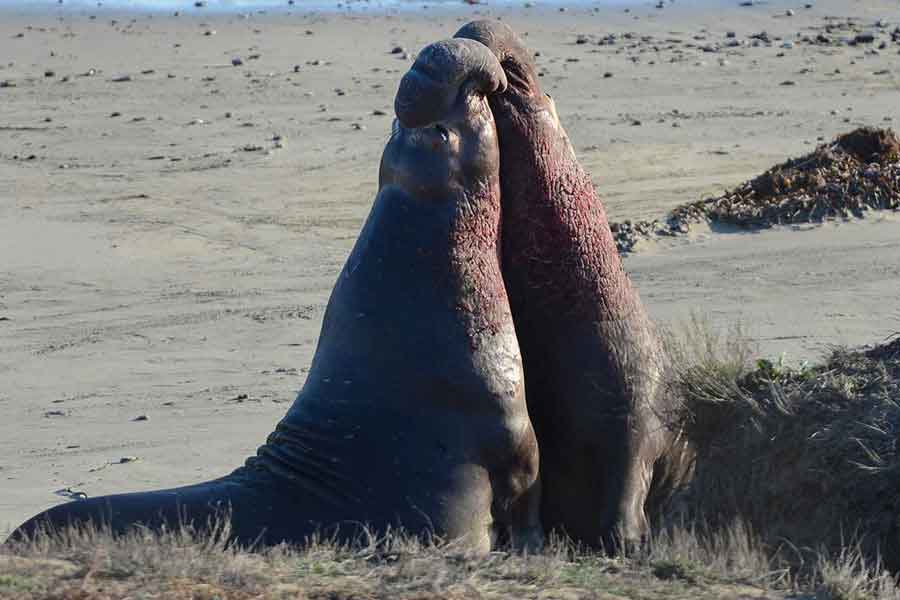
Southern elephant seals spend most of their lives in the ocean, searching for food. Far from the shore, near the edge of the continental shelf, they dive to depths of up to 1,500 meters, hunting their prey in complete darkness.
However, following the predictable pattern of spring and guided by an ancestral instinct, they arrive at the beaches of the Valdes Peninsula, the only continental elephant seal colony in the world. The first females come to give birth after a year of pregnancy and to attempt to conceive again. As they arrive, they distribute themselves along the coast in small groups that will give rise to a harem of up to 130 females. The males arrive shortly after, taking advantage of the already formed harem. The differences are obvious, with females weighing around 500 kilograms while males reach up to three tons. However, the terrestrial season represents a great sacrifice for both sexes: even moving a few meters is an enormous physical effort, and while they are on land, they will be fasting.
Obviously, there are fewer harems than reproductive males, so juveniles and weaker individuals are excluded from the female groups. However, they do not leave the dominant male in peace. Demonstrations of strength, threats, and physical fights are constant, and the blows exchanged by the fighting males can be heard clearly throughout the beach, day and night. Their short but strong teeth tear through the opponents’ skin, and blood flows from open wounds, which will eventually become deep scars.
By the first week of October, the females will give birth to a small pup weighing about 40 kilograms, which will nurse for only three weeks, during which it will triple its weight. A few days after giving birth, the female enters estrus again and is mated and impregnated once more. During these days, the beach becomes even more violent, as the male is unable to fully protect the harem’s border, and the «bachelors» will attempt to assist him in his marital duties.
Nearly 50% of the pups will never reach their first birthday. In fact, hundreds of them will die within a few days of birth, crushed by their father in a fight to defend the harem.
Three weeks after giving birth, the females will return to the open sea to feed after a prolonged fasting period. The pup will not accompany them but will remain on the beach for another month, fasting, until it feels confident enough to venture into the waves and seek its own food. The males will stay on the coast for a few more days, basking in the sun as their wounds heal.
They will all leave the violent beaches and return to the sea, where new dangers await them. Killer whales, also punctual in their arrivals, will have already reached the Valdes Peninsula. But that is another story…
«You cannot defend what you do not love, and you cannot love what you do not know.»

